How to make a podcast - Part 1: Planning
In this section
Why start a podcast?
Podcasts can be a fantastic way of disseminating your research and there are lots of reasons to start one:
- To grow your audience; it’s estimated that there were around 15.6 million listeners to podcasts in the UK in 2020 (Statista 2020).
- To widen your reach; podcasting is an accessible medium for the listener and can allow you to access otherwise difficult-to-reach audiences.
- To widen your network – asking if you can interview someone you admire on your podcast can be a great “in” to talk to the people you’ve always wanted to.
- To raise your profile in your industry and give yourself authority.
- To gain experience and skills with audio production and the media.
- It’s got a relatively low barrier-to-entry in terms of money and equipment.
- To achieve certain aims (see below).
But be warned… there are plenty of reasons not to start a podcast:
- It takes a lot of time and effort – each episode can be hours in the planning, recording, editing and promoting.
- It costs money – audio hardware, software, and podcast hosting sites can set you back a couple of hundred pounds in your first season. The vast majority of podcasts are loss-leaders for their presenters and producers.
- There might be better media out there to achieve your aims – does your idea for a podcast really need to be communicated in a series or would it be better as a one-off audio piece? Would it be improved by visuals as a YouTube video? Or should it really be a written article in a newspaper, blog or magazine?
- Does podcasting give you as much audience engagement as you need to achieve your aims? It is possible to do audience interaction with podcasts, but there might be better ways for you to engage.
If you’re absolutely certain that a podcast is the perfect medium for you, then read on…
Generating your idea
First, get to know your medium – listen to as many podcasts as you can. Here are some great examples of podcasts produced by academics and researchers:

Why Aren’t You a Doctor Yet
Science and tech journalism meets millennial pop culture.
From skin bleaching and genetic testing to facial recognition and data mining, this is the podcast that surgically dissects and disassembles the latest news and drops it directly into your ears.
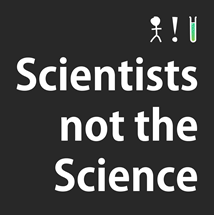 Scientists not the Science
Scientists not the Science
A podcast about the culture of being a scientist.
Dr Stuart Higgins talks to scientists, science communicators, journalists and comedians to find out what it means to be a scientist.
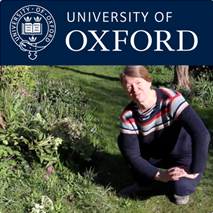 Back Garden Biology
Back Garden Biology
In this fun and informative series Dr Lindsay Turnbull, Oxford University, looks at the biology of the back garden.
The series is for children missing school who would like to carry on practical work in their own garden and have an expert help them understand the theory behind everyday biology.
The key here is engagement. As with all engagement activities, it’s important to ask yourself two key questions:
- What are my aims?
- Who is my audience?
What are your aims?
These might be to promote your work, debunk misinformation about your field, as an information source, to promote the university, to attract prospective students to apply there, to profile inspirational staff, and/or to simply entertain. Whatever it is, be specific.
How can you measure that you’ve achieved these aims? Most podcast hosting sites will provide statistics such as number of downloads and breakdowns of the listeners’ geographical location, gender and age bracket. But how will you measure that you’ve persuaded your audience to apply to university? That you actually entertained them? That you changed their minds on something? That requires them to tell you in two-way engagement.
For true Public Engagement and to be able to measure your aims, the podcast has to work both ways – there needs to be meaningful information flow from you to your audience and also from your audience to you. So, how will you create engagement? You could:
- Include a segment at the beginning and end of each episode for audience questions/correspondence
- Create dedicated social media and email accounts for the podcast and actively engage in online conversations with the audience
- Put on live events – either in-person or live-streamed on social media – with elements of audience interaction such as Q&As
Who are your audience?
There is no such thing as “the general public” – they are a disparate and diverse group of the full cross-section of society. Aiming too wide dilutes your message and means you’ll be less likely to create something that will engage with your audience.
Instead, be as specific as possible about the sort of person you want to listen to your podcast – conjure them in your mind’s eye – and think about how your podcast caters for them. Descriptors could include:
- Age
- Ethnicity
- Gender
- Geographical location
- Level of expertise on the podcast’s topic
- Occupation
- Sexuality
- Socioeconomic status
Once you’ve got your idea, check that it doesn’t already exist as a podcast by searching the most popular apps; Apple Podcasts, Spotify, Acast and PocketCasts. If it does, consider changing the scope or audience.
For more training and support with developing public engagement ideas, contact the Warwick Institute of Engagement.
Decide the details
Next, you’ll need to decide on the details of your podcast:
What’s your podcast’s name? Make it short, catchy, original, on-brand and preferably descriptive of the podcast contents.
What’s the style of your episodes? Will they be monologues, interviews, chat shows or recorded live shows? Will it be scripted or unscripted? Is it fictional drama or non-fiction documentary?
Will you have one host or multiple? One host can be logistically easier to edit and arrange recordings, though more than one host can bring audio interest and higher energy.
How many episodes are you planning? Will this be Season 1 of many? Plan out the contents of at least your first five episodes before you begin.
What’s the right duration for your episodes? This can range from 2 minutes to 2 hours, depending on your aims and audience – are they more likely to be listening on a 25-minute commute or a 5-hour dog walk? Do they have a short attention span? Is your content a long-form conversation or a snappy news bulletin?
What’s your regular release schedule; weekly, fortnightly, monthly? It’s always best to release regularly to appease the podcast chart algorithms, as opposed to releasing them randomly whenever you get around to editing the next episode. Decide which day of the week your audience will prefer – Monday’s good for factual podcasts aimed at commuters, Friday’s good for fun comedy podcasts people listen to when they’re cleaning the oven at the weekend. Choose a manageable schedule and stick to it so that your audience know when to expect the next episode.
Setting it up
Once you’ve ironed out your idea, you’ll need a few other things before you start recording.
Artwork
This is hugely important! It needs to show the title clearly, be on-brand, be bright, eye-catching, with large, stylistic and easy-to-read fonts, without too much fine detail and to appeal to the podcast’s target audience. Take a browse of your favourite podcasts and notice their choice colour pallet, visual style, font, detailing etc.
Here are some great examples and why they work:
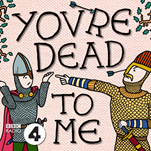 You’re Dead to Me Podcast
You’re Dead to Me Podcast
- Font and cartoons visually illustrate historical content
- Cartoon people imply light-hearted and comedic style
- Logo of producer in corner
 Out with Suzi Ruffell
Out with Suzi Ruffell
- Photo of host indicates serious interview-style show
- Rainbow font implies LGBTQ+ content
- Photographed and named host implies host-led show
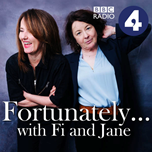 Fortunately
Fortunately
- Photo of hosts wearing smart clothes in casual pose indicates dual-hosted comedy chat show by off-duty radio professionals
- Use of only first-names implies informal tone
- Cool colour pallet lends a feeling of trustworthiness
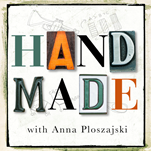 Handmade
Handmade
- Scruffy background, pencil drawings and enamel letters imply content about craft and making
- Scientific diagram indicates scientific content
- Named host indicates interview format
General rules for podcast artwork:
- Must be square aspect ratio
- Must be exported as high-resolution picture file; 3000x3000 pixels
- Must be .jpeg or .png file type
The simplest way to create artwork yourself is on Microsoft PowerPoint. You can change the slide aspect ratio to a square with Design > Slide Size > Custom. When you’re done, export the “slide” as a .jpeg or .png.
Alternatively, if you have budget and means, pay a professional graphic designer/artist to create your artwork for you. Find one in your personal or professional network, or through a freelancer search engine website such as fiverr.
Social media and contact
In order to engage with your audience, they’re going to need to get in touch with you. Create dedicated social media accounts for your podcast on Facebook, Twitter and Instagram, or at least those sites you frequently use yourself. Create a dedicated podcast email address for correspondence too.
- Try and register the same handle across all of them to help your listeners find you easily.
- Remember you’re going to tell people what your handle is out loud on the podcast, so avoid long ones or ones that are difficult to spell.
Make a dedicated website for your podcast. Here you can embed the audio files, upload supplementary visual and written content and host episode transcripts for widening accessibility.
Sounds and music
All podcasts need good introduction music, or at least a catchy jingle. For this, it’s really important that you use Creative Commons, Royalty-free or Public Domain licenced music; it’s illegal to use copyrighted music on your podcast.
Ideally you would create the music yourself or commission a friend or professional to do it – then it’s truly and originally yours. To find someone, tap into your personal and professional networks or commission a freelancer from a directory such as fiverr.
If you don’t have the means to commission someone, there are paid-for and free-of-charge royalty-free music and sound-effect libraries online:
- Pixabay
The BBC also has a library of its sound effects. Check their licencing carefully before use.
With any audio content you use, always check the Licences and Usage.
Finding and booking guests
If you’re producing an interview style podcast, you can find guests in the following places:
- Through your existing contacts
- Through contacting professional organisations
- Put callouts on social media. Twitter is particularly good for this – search e.g. “materials scientist” on Twitter, or use Twitter Lists
- Just google for people who align with your podcast
- Look at New Releases or Coming Soon books on Amazon that align with your podcast and contact the authors to see if they want publicity
- Tap into online communities and forums that align with your podcast
- Ask previous guests if they can recommend anyone in their networks
- Use a free online matchmaking service like Matchmaker
- Once you get your podcast up and running, ask your audience for guest suggestions or ask them to get in touch if they think they could be a good guest themselves
Once you’ve found your guest, get in touch with them with a quick email. Here’s an example:
Dear [Guest],
I’m writing to invite you to be interviewed on my podcast [name ].
A bit more about the pod - it’s called [ name] and it’s about [topic]. Each episode, I interview a [type of guest] about [topic]. For example in pervious episodes, [examples]. You can listen to past episodes here [links to podcast feed].
A bit of background about me, I’m [short bio]. [How the podcast came about]. Here’s my website for more info [personal website].
I’d absolutely love to chat to you on the podcast about [topic], such as [potential areas of discussion]. The style is [style e.g. informal, conversational], and I can supply some questions advance if that aids your preparation.
We’d be recording [online/in-person] via [platform/location], and it usually takes about [recording duration].
Do let me know some convenient times for you in the coming weeks and we’ll set this up.
[Sign-off]
Part 1: Planning
- Why start a podcast?
- Generating your idea
- What are your aims?
- Who are your audience?
- Decide the details
- Setting it up
- Artwork
- Social media and contact
- Sounds and music
- Finding and booking guests
Part 2: Doing
- Recording – Hardware
- Solo
- Multiple speaker recordings
- Setting up the room
- Recording software
- Recording online
- Zoom
- Microsoft teams
- Record smart
- Guests
- Editing
- Exporting
- Distribution
- Marketing
- Growing your audience
- Accessibility
Part 3: Maintaining
- Engage with your audience
- Data storage and archiving
- How to not stop podcasting
- Final words of wisdom
Part 4: Resources
- Downloadable summary checklist
- Further resources and reading
